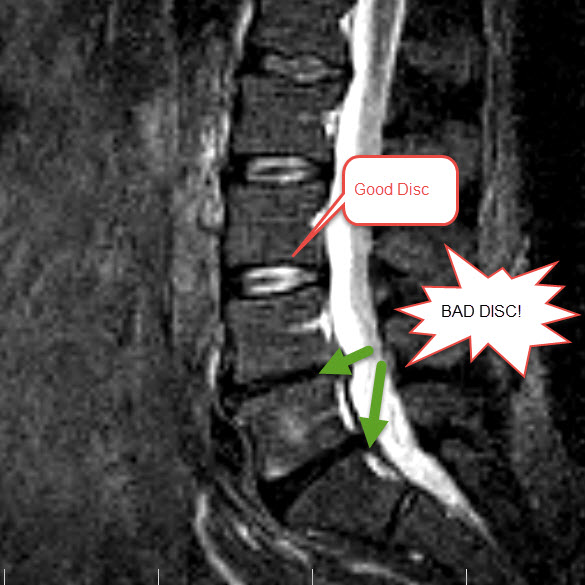Twenty five years ago I herniated my first disc. It was at the L4/L5 level. I didn’t know what happened exactly. I was stationed at the Pentagon working in the Air Force. But, I lived on Ft. Myer, an Army outpost.
I went to the hospital inside the Pentagon–also an Army facility–and was given a generic diagnosis and some extra-strength Tylenol. I lived with that pain throughout my military career and into my civilian life, where a few years later, I finally was diagnosed with the herniation after a bone scan, x-rays, and finally an MRI.
The doctor then indicated no option but surgery, and lacking any local family, well, that scared the hell out of me. How would I take care of myself for the required one week of bedrest, and 8 weeks of reduced activity?
Years later, after I was married, when the Fire Dept. had to come pick me up off my living room floor because I couldn’t move from the pain–and ended up in the hospital on morphine–I figured it was time for surgery.
I’ve since had two discectomies, both at the L4/L5 and L5/S1 levels. One herniation for my first surgery, two in my second. There is now, no real disc material left there.
Now, I’m not young, but I’m still very active. It’s a vicious cycle though. If I exercise and do the things I want to do, I hurt more. If I don’t, I gain weight like a mo-fo, which affects me phsycologically, and then there’s the issue of weight gain and health problems.
Despite being very careful with my exercise routine, as of now, I have another herniation (it’s a degenerative condition at this point) and my only options up until lately have been to have a spinal fusion, or a disc replacement.

Fusion at my age is a big ol’ heck no. The disc replacement, while not a bad option, isn’t ideal either. I’m told it’s not putting it in that’s the problem; it’s the removal of it, and any pieces it’s broken into when it wears out in a few years, that is very dangerous.
But recently, my doctor talked to me about a spinal stimulator. It’s a little wirey device that lays beside your spine above your pain, and intercepts the signal to your brain. The goal is 50% + reduction in pain.
It’s not without its issues:
- You have to have a test installed for a week. That’s not fun.
- Once final, you have the wires and a device the size of those rubbery change holders we all had as kids, sewed into your lower back.
- You have to charge it every week.
- You have to undergo a psych eval, because apparently some early patients freaked out about having something foreign in the body and did Lord knows what to themselves.
But, I think it’s worth a shot. At least it’s reversible, unlike a spinal fusion.
So we’ll see how this goes. My insurance company is going to LOVE me. But, it’s probably cheaper than 20 more years of epidurals and RF ablation.
